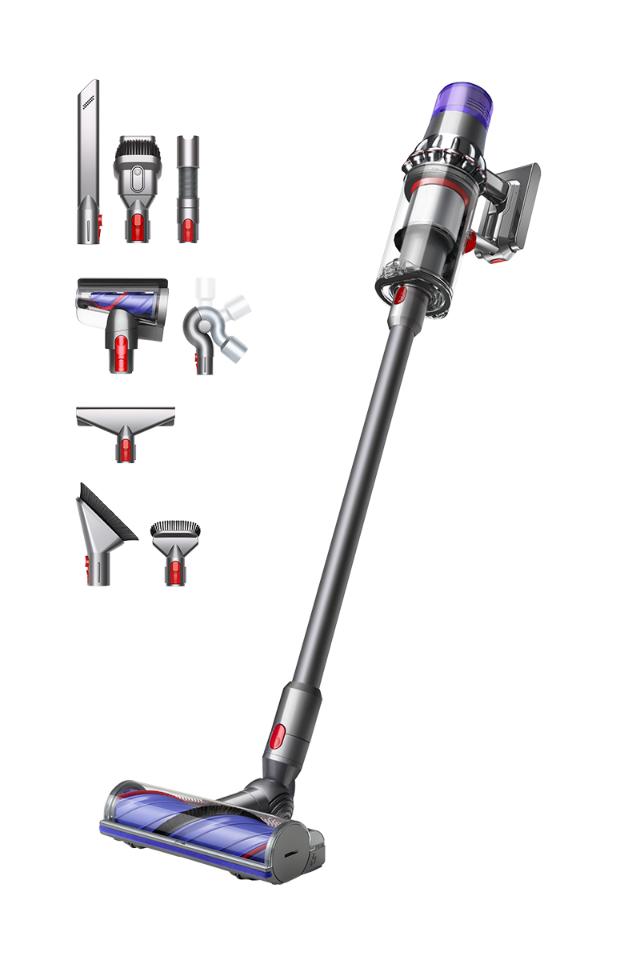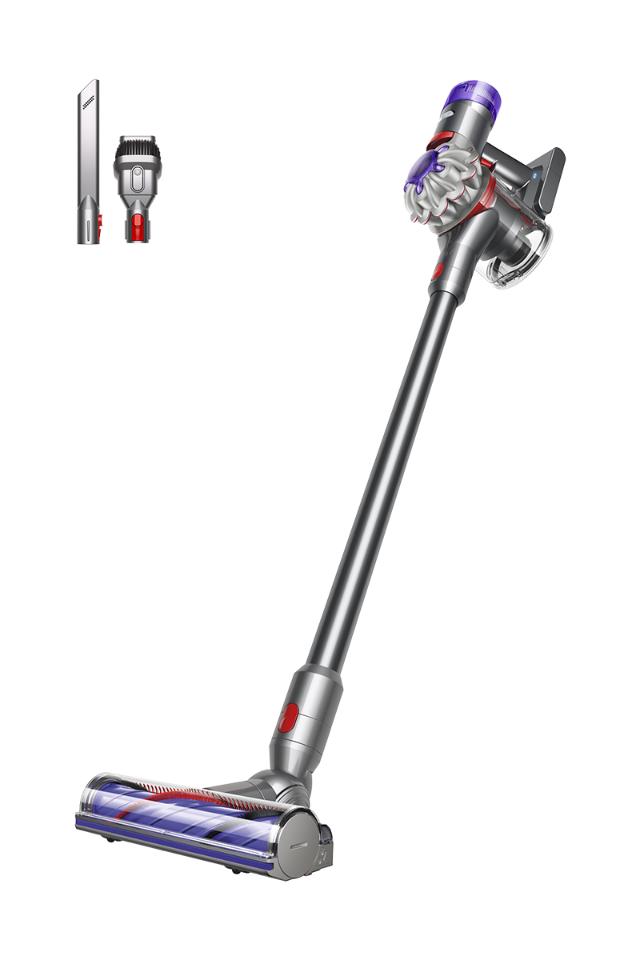How Long Does a Dyson Stick Vacuum Last? Unveil the Truth

A Dyson stick vacuum typically lasts between five to ten years. This lifespan depends on usage and maintenance.
Dyson stick vacuums are known for their quality and durability. They are popular due to their powerful suction and cordless convenience. But how long can you expect one to last? Understanding the lifespan of a Dyson stick vacuum helps you make a smart buying decision.
Proper care and regular maintenance can extend its life. In this blog, we will explore factors that affect the vacuum’s longevity. We will also share tips on how to keep your Dyson stick vacuum running efficiently for years. Stay tuned to learn more about getting the most out of your investment.

Credit: www.dyson.com
Introduction To Dyson Stick Vacuums
Dyson stick vacuums are known for their sleek design and powerful suction. These vacuums are cordless, making them easy to use and store. They are designed to clean various surfaces, from carpets to hard floors. The question many ask is, “How long does a Dyson stick vacuum last?” To answer this, we first need to understand Dyson stick vacuums.
Brief History
Dyson Ltd. is a British technology company founded by James Dyson in 1991. James Dyson invented the first bagless vacuum cleaner, which revolutionized the vacuum industry. Over the years, Dyson has introduced various models, including the popular stick vacuum.
Popularity And Appeal
Dyson stick vacuums have gained immense popularity due to their convenience and efficiency. People love them for their lightweight design and ease of use. These vacuums are also known for their powerful suction and long battery life. Many users appreciate the fact that they can clean their homes without dealing with cords.
Here are some reasons why Dyson stick vacuums are so appealing:
- Cordless design: No more tangled cords.
- Lightweight: Easy to carry around the house.
- Versatile: Can clean various surfaces.
- Powerful suction: Picks up dirt and debris efficiently.
- Long battery life: Allows for extended cleaning sessions.
Dyson continues to innovate and improve their vacuum models. This ensures that users get the best cleaning experience possible.

Credit: www.dyson.com
Factors Influencing Lifespan
Wondering how long a Dyson stick vacuum will last? Several factors influence its lifespan. Understanding these factors can help you get the most out of your vacuum. Let’s dive into the key aspects that affect the longevity of your Dyson stick vacuum.
Usage Frequency
How often you use your vacuum plays a big role in its lifespan. Frequent use can wear out parts faster. If you vacuum daily, parts may need replacing sooner. Less frequent use can extend the life of the vacuum. Consider your cleaning habits. They directly impact how long your Dyson will last.
Maintenance Practices
Proper maintenance is crucial for a long-lasting vacuum. Regularly clean the filters and brush bars. Check for blockages often. Replace parts like filters and brush bars when needed. These practices prevent wear and tear. They keep your vacuum running smoothly. Neglecting maintenance can shorten its lifespan. Consistent care ensures it works well for years.
Battery Life Expectations
Understanding the battery life of a Dyson stick vacuum is essential. Many users wonder how long their device will last. The battery life can impact your cleaning routine. Below, we explore the average battery lifespan and the signs of battery wear.
Average Battery Lifespan
The average battery lifespan of a Dyson stick vacuum varies. Typically, it ranges between 3 to 5 years. This depends on usage and maintenance. With proper care, the battery may last longer. Regular cleaning of the vacuum and battery can help extend its life.
| Usage | Battery Lifespan |
|---|---|
| Light Use (1-2 times a week) | Up to 5 years |
| Moderate Use (3-4 times a week) | Around 4 years |
| Heavy Use (Daily) | About 3 years |
Signs Of Battery Wear
Over time, you may notice signs of battery wear. Recognizing these signs can help you take action. Here are some common indicators:
- Reduced Run Time: The vacuum runs for shorter periods.
- Longer Charging Time: The battery takes longer to charge fully.
- Power Fluctuations: The vacuum power level changes unexpectedly.
If you notice these signs, consider replacing the battery. Regular checks and maintenance can help. This ensures your Dyson stick vacuum performs efficiently.

Credit: www.amazon.com
Motor Durability
One of the key factors determining the lifespan of a Dyson stick vacuum is the motor durability. The motor is the heart of the vacuum. It powers the suction and ensures efficient cleaning. Understanding the types of motors used and common issues can help you gauge how long your Dyson stick vacuum might last.
Types Of Motors Used
Dyson stick vacuums use different types of motors. Each type offers unique benefits:
- Digital Motor: Known for high efficiency and speed. This motor is lightweight and powerful.
- Brushless Motor: Provides better efficiency and longevity. It has fewer moving parts, reducing wear and tear.
Both types are designed for durability. They are built to withstand regular use. They also ensure consistent performance over time.
Common Motor Issues
Even with durable motors, issues can arise. Common motor problems include:
| Issue | Description |
|---|---|
| Overheating | Occurs when the motor runs for long periods. It can lead to reduced performance. |
| Loss of Suction | This can happen due to blockages or wear in the motor components. |
| Strange Noises | Indicates potential internal damage. It might require professional attention. |
Regular maintenance can prevent these issues. Clean the filters and check for blockages. This helps in extending the motor’s life.
Build Quality And Materials
Dyson stick vacuums are known for their impressive build quality. They combine high-quality materials and thoughtful design. This ensures durability and longevity. But what exactly goes into their construction?
Material Strength
Dyson vacuums use strong and lightweight materials. High-grade plastic and metal components form the structure. This combination provides strength without adding extra weight.
The plastic used is often polycarbonate. This material is known for its impact resistance. It can withstand drops and bumps during use.
Metal parts, like aluminum, add to the vacuum’s durability. They are used in areas that need extra strength. This helps in maintaining the vacuum’s integrity over time.
Design Considerations
The design of Dyson stick vacuums also plays a role in their longevity. Each part is meticulously designed for ease of use and durability. The layout ensures that all components fit together seamlessly.
The motor is compact yet powerful. It is designed to last, even with frequent use. Other parts, like the brush bar, are also built to be tough.
Dyson engineers also focus on balance. The weight distribution ensures that the vacuum is easy to maneuver. This reduces strain on the user and the vacuum itself.
User Experiences And Reviews
When considering how long a Dyson stick vacuum lasts, user experiences and reviews provide valuable insights. Let’s explore what people are saying about their Dyson stick vacuums.
Positive Feedback
Many users praise the durability and efficiency of Dyson stick vacuums. Here are some common points of positive feedback:
- Battery Life: Users note that the battery life is impressive. Most find it sufficient for their cleaning needs.
- Performance: Customers are happy with the powerful suction. They mention it picks up dirt and debris effectively.
- Ease of Use: People appreciate how lightweight and easy to maneuver it is. This makes cleaning less of a chore.
Users appreciate the convenience and performance of Dyson stick vacuums. These aspects contribute to their longevity and user satisfaction.
Common Complaints
Despite the positive feedback, some users have noted areas for improvement. Here are common complaints:
| Complaint | Details |
|---|---|
| Battery Issues | Some users report battery problems after a few years. They mention a decline in battery life. |
| Replacement Parts | Finding replacement parts can be tricky. Users note that some parts are expensive. |
| Price | Many users feel the vacuum is pricey. They expect a longer lifespan given the cost. |
Understanding these common complaints can help potential buyers make an informed decision. It’s important to weigh both positive and negative user experiences.
Extending The Lifespan
Maximizing the lifespan of your Dyson stick vacuum ensures you get the most value from your investment. With proper care and attention, you can extend the durability and performance of your device. This section covers Proper Maintenance Tips and the importance of Replacement Parts Availability.
Proper Maintenance Tips
Regular maintenance is key to keeping your Dyson stick vacuum in top condition. Follow these simple steps:
- Clean the filters: Rinse the filters every month. Let them dry completely before reusing.
- Empty the dustbin: Empty the dustbin after each use. This prevents clogging and maintains suction power.
- Check for blockages: Inspect the brush bar, hose, and attachments for any blockages. Clear them to ensure smooth operation.
- Inspect the brush bar: Remove hair and debris from the brush bar regularly. This helps maintain efficient cleaning.
Replacement Parts Availability
The availability of replacement parts can greatly impact the lifespan of your Dyson stick vacuum. Here’s what you should know:
| Part | Recommended Replacement Frequency | Where to Buy |
|---|---|---|
| Filters | Every 6-12 months | Official Dyson website or authorized retailers |
| Battery | Every 2-3 years | Official Dyson website or authorized retailers |
| Brush Bar | As needed | Official Dyson website or authorized retailers |
Using genuine Dyson parts ensures compatibility and performance. Avoid third-party parts as they may not fit or work correctly, potentially shortening the lifespan of your vacuum.
When To Replace Your Dyson Stick Vacuum
Dyson stick vacuums typically last around seven years with regular use. Consider replacing the vacuum when performance drops or battery life shortens significantly. Regular maintenance can extend its lifespan, but frequent issues may signal it’s time for a new one.
Understanding when to replace your Dyson stick vacuum is crucial. A well-maintained vacuum can last for many years. But, every appliance has a lifespan. Knowing the signs can help you avoid inconvenience.
Signs It’s Time For A New One
Your vacuum might not pick up dirt as well. This could mean the motor is wearing out. Frequent clogs and blockages also signal a problem. Another sign is reduced battery life. If it doesn’t hold a charge, it may be time to replace it. Loud or unusual noises can also indicate mechanical issues.
Cost-benefit Analysis
Consider the cost of repairs versus buying new. Sometimes, repairs can be expensive. Adding up repair costs might show buying new is better. Newer models have advanced features. They are often more efficient. This could save you time and energy in the long run. So, weigh the costs and benefits carefully.
Conclusion
A Dyson stick vacuum can last many years with proper care. Regular maintenance is key. Clean the filters and check for blockages often. Charge the battery correctly and store the vacuum properly. By doing this, you can extend its lifespan.
Investing in a Dyson stick vacuum is a smart choice. It offers durability and efficiency. Remember, taking care of your vacuum ensures it serves you well for a long time.



